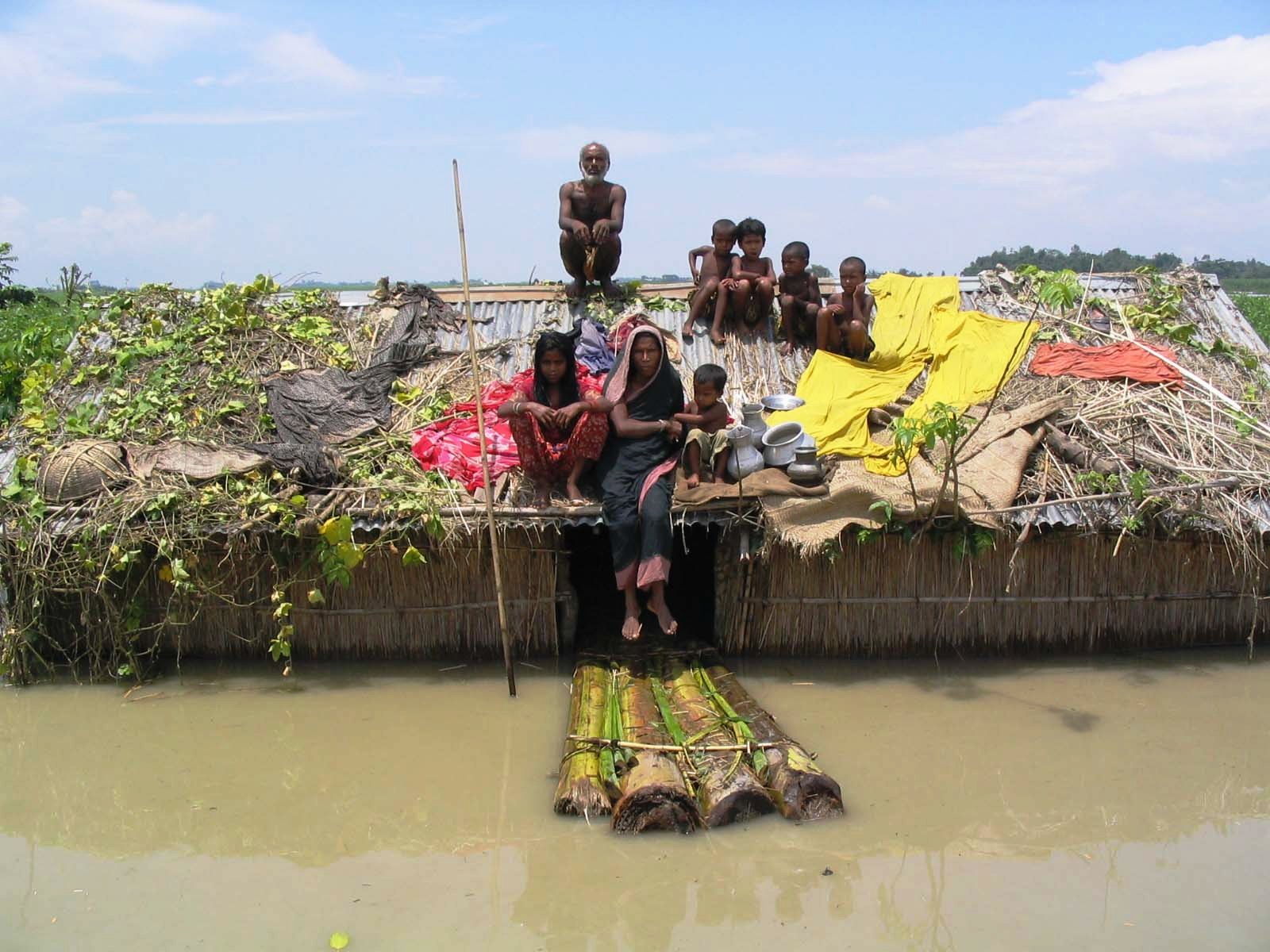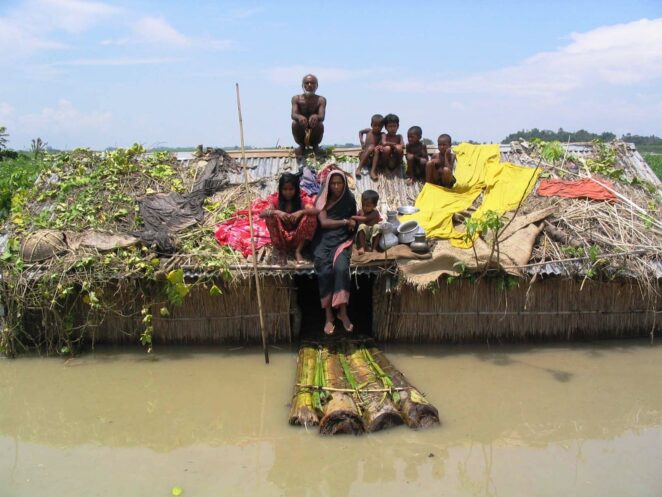Promoting household level adaptation practices to deal with flood and water logging in the south central coastal region of Bangladesh


© Practical Action
Adaptation context
Much of Bangladesh, situated in the Ganges Delta, lies below 10m above sea level. As such, more than two- thirds of Bangladesh is wetland, which is rich in biodiversity of fauna and flora, but makes populations living there extremely vulnerability to flooding, droughts, water logging and sea-level rise. Moreover 80% of the country’s rural people depend on various wetland resources.
Although Bangladesh is a minor contributor to the annual global load of greenhouse gases, it faces severe impacts because of them. In addition, the country is the least capable of reducing its already low per capita greenhouse gas (GHG) emissions. Hence, Bangladesh has to prepare for the anticipated changes and people have to adapt to a continuously changing climatic pattern. The Gopalgonj region is a particularly sensitive area to flooding and water logging. In the future, environmental vulnerabilities are even going to significantly increase, partly due to climate change, partly due to other forms of resource and livelihoods pressures.
Project description
In Bangladesh, NCA together with partners RDRS (Rangpur Dinajpur Rural Service) and resource partner BCAS (Bangladesh Centre for Advanced Studies) has contributed to 10,500 households benefitting from climate change adaptation measures. Annually 300 task force members are trained in disaster risk management, 200 households have their plinths raised (see explanation below), 30 villages are linked to federal infrastructure by flood proof access roads, 200 solar power units have been constructed. The project is today run by RDRS and a climate consortium where NCA is the lead agency for ACT Alliance members FCA (FinchurchAid) and CoS (Church of Sweden).
This climate change adaptation project has helped to reduce poor household’s vulnerability to climate change through the implementation of some 30 different adaptation measures. The following describes two such examples: the raising of plinths which is entails raising homesteads to reduce exposure to floods and the construction of floating gardens which is cultivation on floating platforms, called bairas in the Bengal language. During 2010, 90 of these bairas were constructed.
The raised plinths are a permanent structure, made of soil, earth and stones or bricks and cement (depending on availability and purchasing power). Sizes of plinths will vary, depending on the water level in times of floods.
Plinths are not new in Bangladesh, but most plinths are washed away during floods due to poor construction. With improved construction techniques, the plinths can withstand repeated floods and, with proper maintenance, become a permanent structure. When building plinths people obtain soil from neighbouring areas and cement and stones (provided by the project) but they have to provide or pay for the labour.
Each plinth has a financial cost of approximately USD 100. Taskforces are organized to monitor and co-ordinate the work during plinth construction. Creating awareness on best hygienepractices, water and sanitation,home gardening, connectingroads, and the installations of biogas production units are alsocentral parts of the programme.
The baira is a floating cultivation platform made by the piling of aquatic plants. Farmers place bamboo poles onto a dense growth of water hyacinths. More hyacinths are piled on top. Other aquatic plants like deep water rice straw, Azolla (an aquatic fern) and silt of clay are added. On the floating platform, seedlings and vegetables can be grown. During period of flooding and water-logging, field crops are often damaged. Crops plated on baira can survive as they rise above the flood levels. Farmers normally move the baira to an area where it can be managed better and anchored as constant movement can undermine the stability. Usually, it is possible to harvest 2-3 times during the lifespan of one baira. By using floating gardens, people can still grow a wide variety of crops and achieve good yields. During the dry season, the baira is used as organic material for fertilising the fields. The bairas productivity can be affected negatively depending on the rate of salt dissolved in the water resource- this makes bairas less effective as you move towards the Bay of Bengal.
Project site and community background
Based of the strategy formulated in 2007, Goalgram has been selected as the project village for implementing different activities to enhance adaptive capacity to deal with flooding and water logging. The village situated with the complex of Chanda Beel under Nanikhir Union of Muksodpur Upazila of Gopalgonj District. The village is highly affected by flooding. Most of the households depend on agriculture, wage labour, share cropper and fishing. There are 94.8% Hindu and more than 5% of Christian families in Goalgram village. The average family size of the surveyed Households is about 5.3, which is slightly less than the national average of family size 5.4. The literacy rate of the village Household heads (HHs) is 15%. About 36% of HHs can only sign in the village, 20% HHs have completed secondary level education and 3% HH heads have received Bachelors degree.
(0) Comments
There is no content